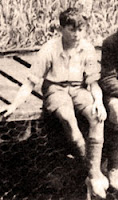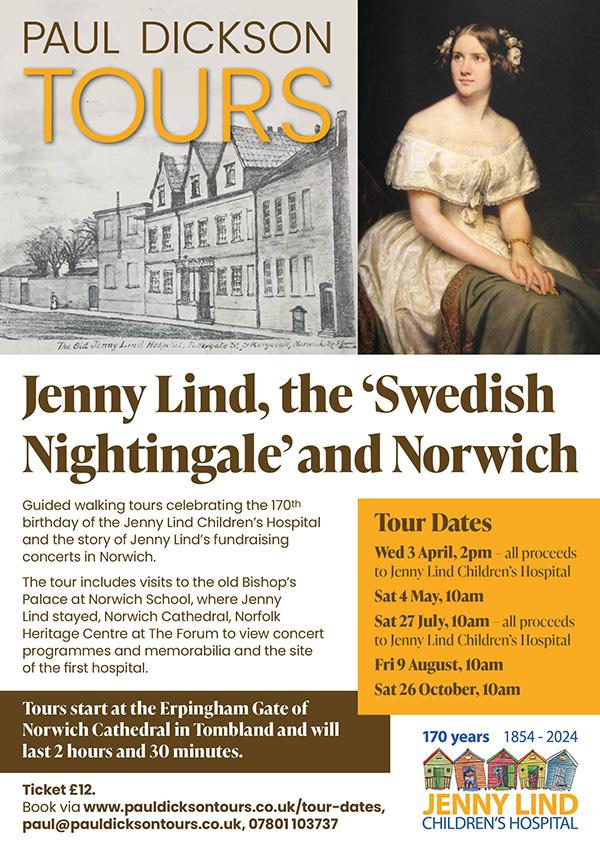Where has the time gone this year? It seems such a short while since we were trying to decide what to give everyone for Christmas and now already it is only a few weeks to the summer solstice and the longest day. There are probably lots of children still getting fun and pleasure from the gifts they received and many more considering what they are going to ask for when Yuletide comes round again.
Each year it seems that, except for the very young, the demand for traditional toys and games gets less while more and more children state a preference for technical gadgets. These are usually associated with mobile phones or pop music and games linked to a computer or television.
 There are those who will still go for a bicycle or some sort of trendy gear but it has to be the right make, size and colour or it will not be appreciated. No doubt the media will advise us all in very good time exactly what they should ask for. Just as they do every autumn!
There are those who will still go for a bicycle or some sort of trendy gear but it has to be the right make, size and colour or it will not be appreciated. No doubt the media will advise us all in very good time exactly what they should ask for. Just as they do every autumn!
Did You Know? In every town there used to be an abundance of shops full of many different toys for every age group all the year round. Over recent years Society and our lifestyle has changed so much there is no longer a demand for them. Could this be an indication that our children are growing up too quickly? If so, are they missing those happy go lucky days of childhood that always remain firmly planted in the minds of all adults.
Going way back before the First World War babies were dressed in long clothes until they were about eighteen months old with only their faces and hands visible. This must have been a restriction to even the most forward and energetic of them. Not to mention the discomfort when the weather was warm. They had rattles and small painted wooden objects on elastic stretched across their pram or cot so they could watch them dancing about.
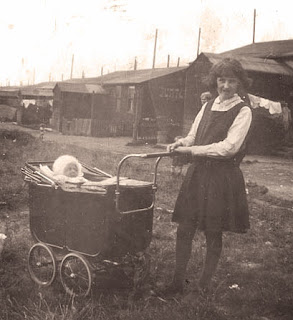 There were no plastic toys in those days everything had to be made from wood, rubber or some kind of cloth. Porcelain was used for the arms, legs and heads of the more expensive dolls and puppets. The nearest thing they had to plastic was celluloid. It was used for things like the hand held windmills that were always prominent at the seaside. Books were very popular with children of all ages. Starting with the simplest to help them learn to read they soon progressed to the traditional Nursery Rhymes and Fairy Stories.
There were no plastic toys in those days everything had to be made from wood, rubber or some kind of cloth. Porcelain was used for the arms, legs and heads of the more expensive dolls and puppets. The nearest thing they had to plastic was celluloid. It was used for things like the hand held windmills that were always prominent at the seaside. Books were very popular with children of all ages. Starting with the simplest to help them learn to read they soon progressed to the traditional Nursery Rhymes and Fairy Stories.
In those early days it was the parents, most often the mother, who taught their children to read, write, add up and learn their multiplication tables. By the time they were five and started school most of them knew their alphabet and had mastered the basics of the three R’s.
Although everyone wanted their child to be an Academic it was generally accepted that those years spent in infant classes laid the foundation that was built on when serious teaching started after they were about twelve. That gave them ample time to have fun mixing with others and finding out for themselves what rewards life offered in exchange for the effort they were prepared to put in. With parental guidance they learned from experience.
All through their early years children not only had fun with their toys, they also learned a lot from them. Railway, farmyard and meccano sets etc. for the boys and dolls, prams, doll’s houses, skipping ropes etc. for the girls. They were all educational.
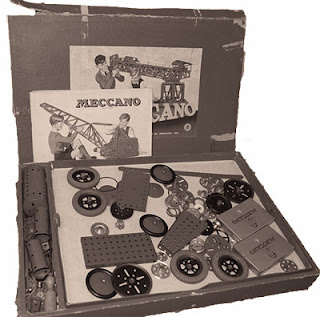 When family budgets didn’t stretch to shop prices, parents often turned their hands to making such things as knitted cuddly toys, a wooden horse or train on wheels that could be pulled along or even a junior wheelbarrow so father could be helped on the allotment.
When family budgets didn’t stretch to shop prices, parents often turned their hands to making such things as knitted cuddly toys, a wooden horse or train on wheels that could be pulled along or even a junior wheelbarrow so father could be helped on the allotment.
When boys reached their early teens they often went to the local tradesmen for empty wooden boxes, especially tea chests that were made of ply wood. They would then scour the local dumps for old prams and pushchairs to find a decent set of wheels. When they had sufficient material all they needed was the use of their father’s tools before they could settle down to the task of building a go-cart.
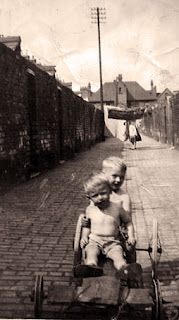 The finished model was steered by a rope attached to the front axle and propelled by a companion pushing from the back. Some of the better constructed models were fitted with a brake which was no more than a piece of wood shaped and hinged with a single nail or screw, to put pressure on front of the tyre of one of the wheels. It was necessary to have some such control when travelling down a steep hill and the cart went too fast for the boy behind to keep up.
The finished model was steered by a rope attached to the front axle and propelled by a companion pushing from the back. Some of the better constructed models were fitted with a brake which was no more than a piece of wood shaped and hinged with a single nail or screw, to put pressure on front of the tyre of one of the wheels. It was necessary to have some such control when travelling down a steep hill and the cart went too fast for the boy behind to keep up.
Unfortunately, if it was applied too hard it often broke off where it was hinged or all the pressure being put on one wheel caused the cart to veer to one side and tip over. However, that was all part of the fun and many happy hours were passed racing home made carts. It made a change from playing the usual games or just kicking a ball around.
Nowadays, at a very early age, many youngsters are able to recognise and use a computer keyboard as well as text a friend on their mobile. As they grow older there is less need for them to go out and meet people, they can sit on the bed in their room and chat to their friends on their mobile or laptop.
Over recent years, our children have been subjected to criticism from many quarters and with expectations continuing to rise the pressure on them gets more and more. Would they have the same attitude and act in the way they do if fifty years ago, when our Educational System was changed, it had been totally agreed on, implemented and not repeatedly interfered with?
Why is it assumed that every child wants to attain a degree in a specialist profession. Do the people responsible for our youngsters not realise that every one is an individual with different values?
They all have their own aspirations and there will always be those who would rather do a job they don’t have to think about too much even if it does dirty their hands. Why should they be expected to cooperate if they are being driven down a path they find difficult and do not wish to follow.
Such a system can only cause discontent that might also upset those who would otherwise have been quite happy with the opportunity they were given.
valley lad – [FIFTY-ONE]
